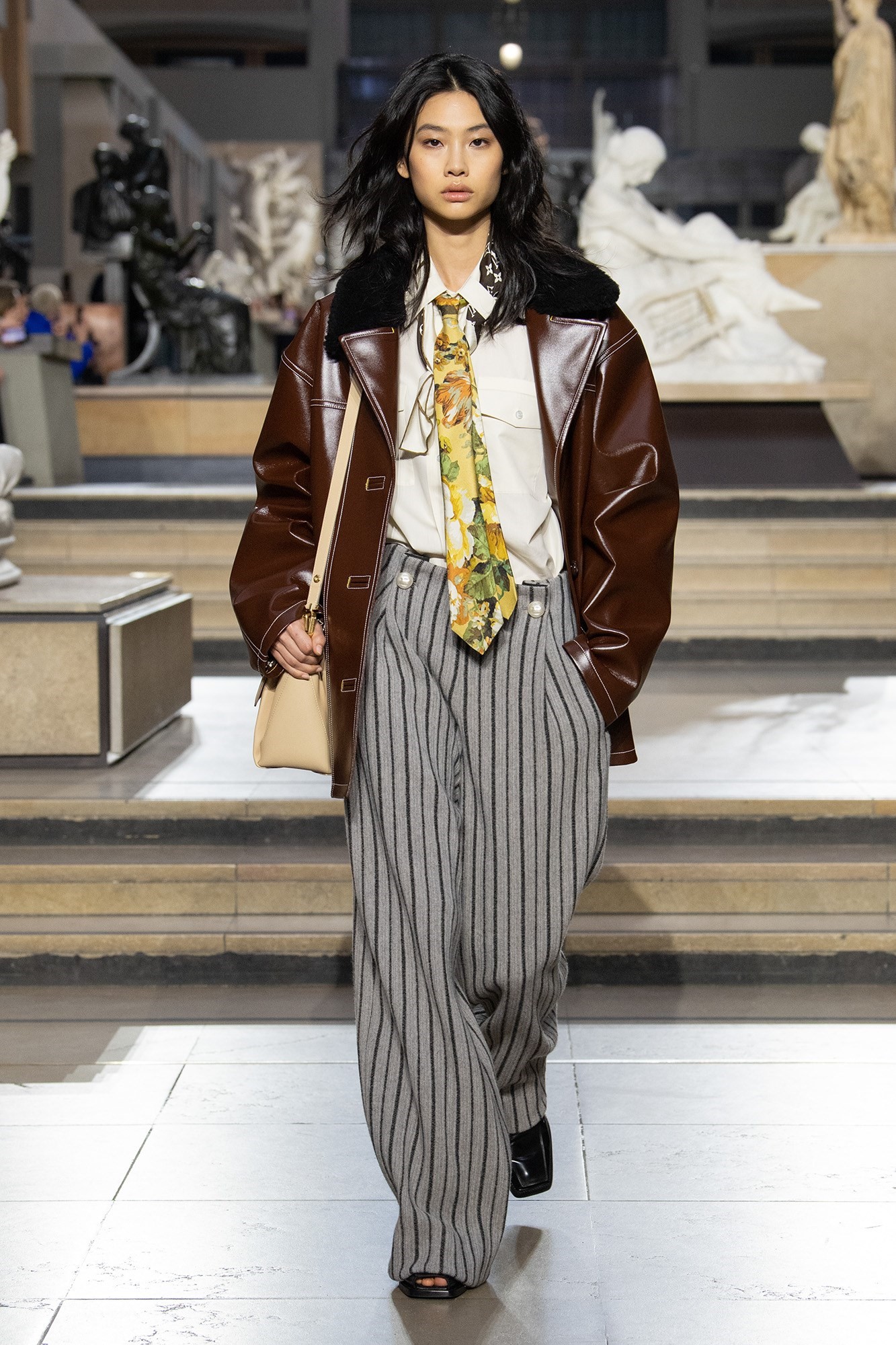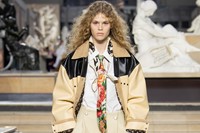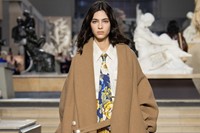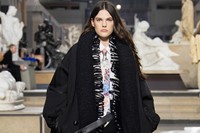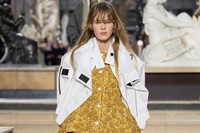Nicolas Ghesquière shifted his Louis Vuitton show a day back in the Paris schedule, to take advantage of the day the Musée d’Orsay is closed. Moving across the river from the Louvre, he also skipped forwards a few centuries, from the 17th century to the 19th.
The Musée d’Orsay was originally a Beaux-Arts rail station, built on the site of a former palace. “It was contemporaneous to Louis Vuitton,” said Ghesquière. But the Palais became a station, a key point of embarkation for travellers in the very heart of Paris and a symbol of the modernism of train travel. With construction completed in 1900, Louis Vuitton’s monogram is actually four years older than the museum itself. And in the grand vaulted hall, with traces of its history as the start of many voyages still evident, Ghesquière chose to begin his new season.
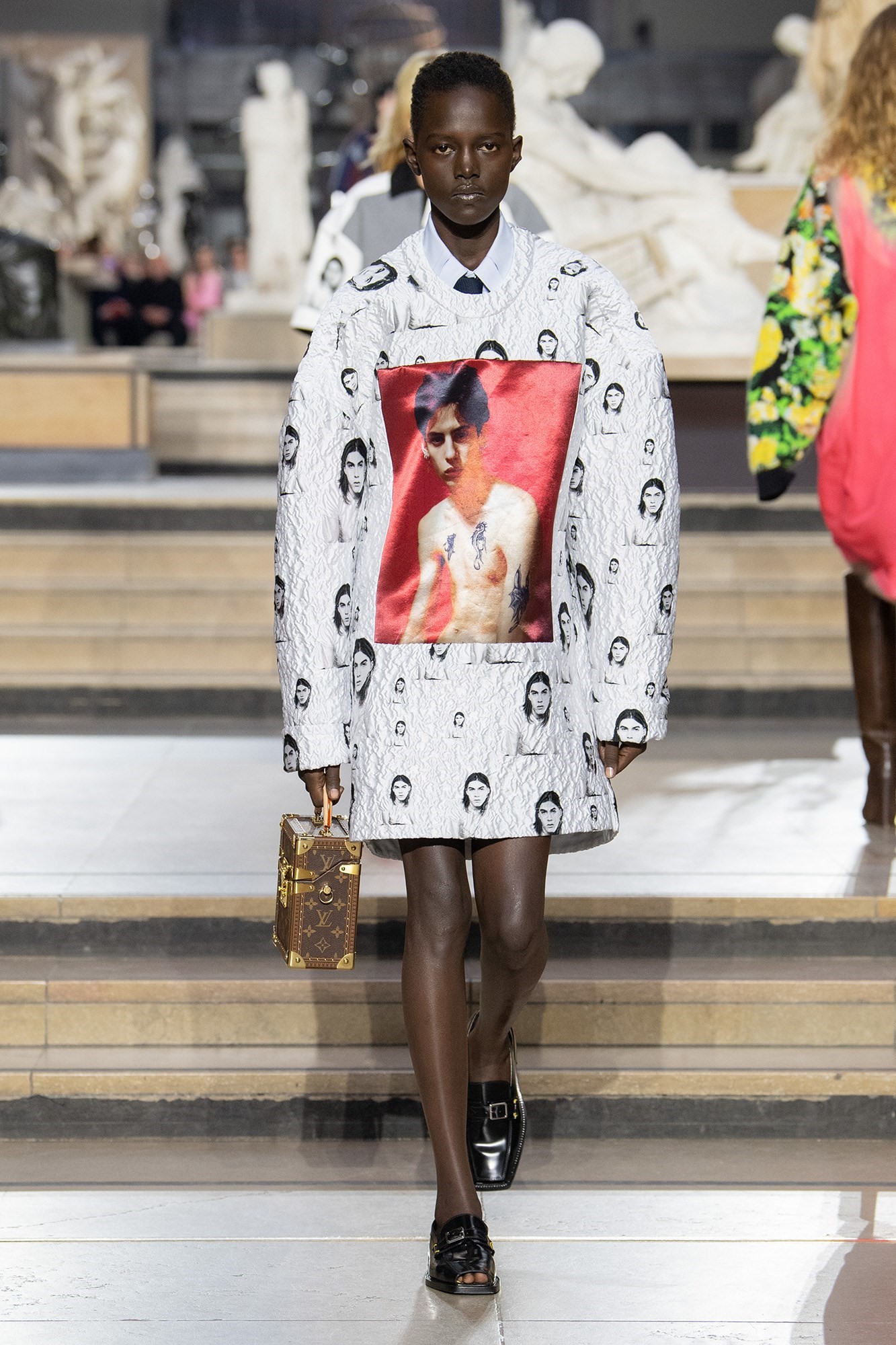
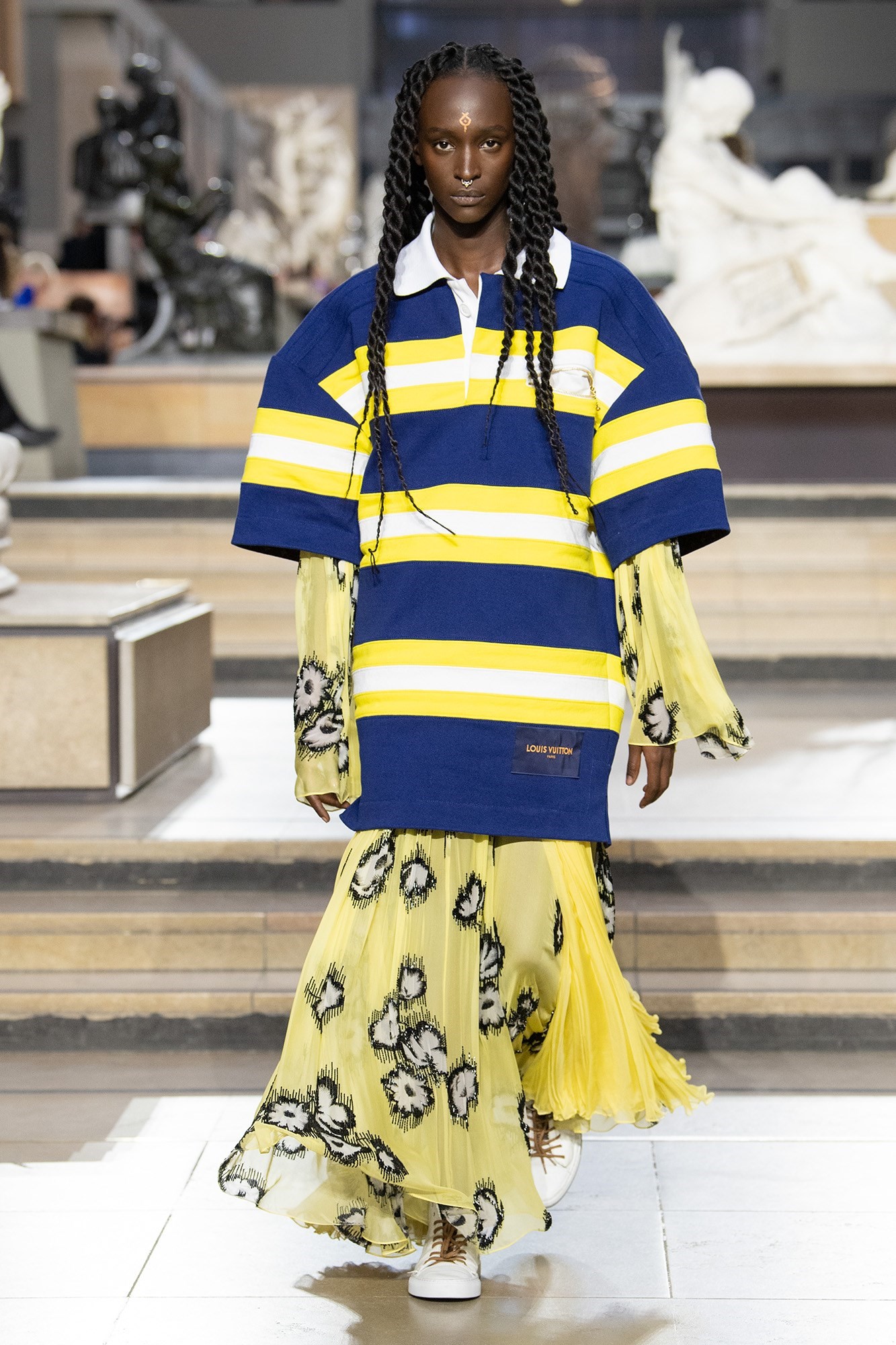
In looking backwards, Ghesquière alighted on a universal theme: the idea of youth, tinged with nostalgia. A personal history that we all live, and perhaps want to relive. “A teenage fantasy,” was his own descriptor of a collection of clothes that evoked a gangly sense of teenage bodies. Garments seemed slightly too big or too small, a rapport with the form beneath that seemed in constant flux, either anticipating growth or outgrown themselves. The mix of different pieces evoked a sense of shifting identities, of self-discovery. “A succession of collages that mix education, cultural references, idols, heroes and heroines,” he said. “To forge a personality, to distinguish oneself.”
Which is perhaps why the show played out as a sequence of ‘gangs’, groups of models similarly attired, as if clad in the clothes of a subcultural clique, associating with their likes. They were typically atypical, in quintessentially Ghesquière fashion: a clutch of wide-cut pinafores, halfway between school uniform and panier skirts, crossed paths with butch, masculine-cut bombers shrugged over wide trousers. Mannish coats, wide-shouldered, were shrugged over tailored suits. A red riding jacket walked rogue. And a sequence of outfits were printed with seemingly random images by the photographer David Sims, shot in the nascent years of his career in the early 1990s, and capturing youth of that time. They seemed pinned on outfits, like pin-up shots, aspirationally tacked onto an adolescent’s bedroom wall. “They could almost be the kind of T-shirts teenagers buy on their way home from a concert,” said Ghesquière. Except, of course, they’re Louis Vuitton.
Vuitton is all about voyaging, of course. The models’ catwalk wound through centuries of art, a path that had itself been trod by travellers a hundred years before them. I couldn’t help but crack a smile and think of how many listless, disinterested teenagers have roamed the halls of that museum over the years, ignoring the art like the models did. But game face back on: Ghesquière seemed to reason that life itself is a voyage, of discovery of yourself and others, and of what – and who – you want to be. “Testing. Trying. Playing. Knowing. Wearing. Desiring … Wanting it all.” Was Ghesquière talking about youth, or of fashion? And maybe fashion’s perceived relentless pursuit of youth is about pursuit of retracing those steps of discovery, exploring that voyage once again? Certainly this collection captured the joyful verve of youth, its ceaseless invention, its dynamic energy.
